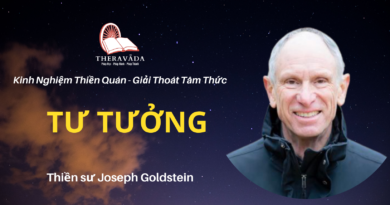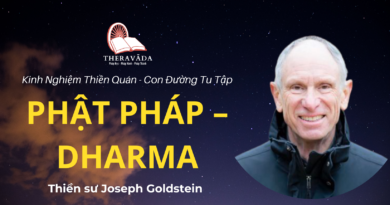A Technique Of Living – 12. The Attainment Of Tranquillity
A TECHNIQUE OF LIVING – 12. THE ATTAINMENT OF TRANQUILLITY
IN his evolutionary history, man has attained to the dominant position in his world by virtue of his intellect; but nevertheless he’s been governed largely by his instincts and emotions. Man’s primary motivation has come from his self-preserving and race-preserving urges towards fighting, escaping, mating, and so on; his intellect has functioned, in part at least, by steering him where his instincts have urged him to go. However, without his instincts and emotions, man would never have survived. It has been said:
Were it fully understood that the emotions are the masters and the intellect the servant, it would seem that little could be done by improving the servant while the masters remained unimproved. Improving the servant does but give the masters more power of achieving their end. (Herbert Spencer)
These primitive urges, then, have served a purpose in man’s evolution, but in general they are appropriate to primitive conditions; they were evolved under primitive conditions, and in many ways they fail to fit into the circumstances of civilized life. Thus for further human progress and for the fulfilment of man’s potentialities, it now seems that his motivations must be transformed and refined.
Progress so far has been racial rather than individual; that is to say it is mankind as a whole that has progressed or evolved, and the individual in most cases has been simply a unit in the evolving race. Now, however, it appears that many individual human beings have reached a point at which their progress along the evolutionary path is largely in their own hands.
Thus it seems that some of us have reached a point at which our further evolution can be consciously motivated and individual, rather than unconsciously motivated and racial.
Nevertheless, the primitive urges are still with us, still integral parts of our mental make-up; and in one way or another they are responsible for a great deal of our emotionally-biased thought processes and for many of our falsely-coloured mental attitudes. They are at the root of many of our inner disturbances and of many of our conflicts with others. In this way, these primitive urges – once the essential factors in our earlier evolution – are now (to some extent) retarding factors. They can become obstacles to the attainment of tranquillity.
The Buddha-doctrine stresses a number of mental fetters and various inner hindrances which prevent the mind’s proper functioning, and therefore stand in the way of tranquillity. Among the retarding factors are scepticism, the feeling of separate selfhood, and ill-will; these, and others, are spoken of as the paralysing defilements of the mind.
Let’s consider these obstacles or retarding factors one at a time, beginning with scepticism. From the Buddhist standpoint, scepticism is a state of mental rigidity, and this condition is no better than the opposite one of gullibility. The middle way between the extremes of scepticism and gullibility is a state of mental flexibility, a state of readiness to examine new or strange ideas and to evaluate them without pre-judging them.
Scepticism or rigidity of mind is an obstacle to tranquillity because it is a refusal to examine and evaluate new ideas without emotional pre-judgment. The dominating emotion in many cases may be a feeling of superiority, or there may be some kind of fear or an element of resentment towards the source of the new ideas; but, except where the intellect is incapable of grasping the new ideas, the rigidity is due to the domination of emotion of some kind or other.
The conception and conceit of selfhood is another obstacle to tranquillity. According to the Buddha-doctrine the self is an illusion. It has been said:
The self is a label with nothing attached to it.
You may agree with the theoretical considerations of this “doctrine of egolessness”, as it is called, or you may not; this is unimportant at this stage. The important thing is your own inner attitude, your own feelings about it. As you feel for the sufferings of others (and for their enjoyments too), so to that extent you have broken down this obstacle, the illusion of selfhood.
As further progress takes place, the focus is slowly and gradually removed from self-centred interests and transferred to the welfare of life as a whole; and, as the steel grip of self-centredness loosens, so an inner tranquillity begins to take the place of anxiety, resentment, and self-assertion.
This inner tranquillity may not yet show itself outwardly in the form of completely calm and unruffled behaviour: it is felt at first as a still centre, even though there is yet a great deal of turmoil around it, and to establish this still centre is the first stage in the attainment of tranquillity. It can be expressed in this way:
Enlightenment is the one still point in the centre of the turmoil, just as the axle is the one still point in the centre of the moving wheel.
Now another obstacle to tranquillity is ill-will, and this includes all grades of ill-will, from the mildest and almost unnoticeable resentment up to the most raging fury. While you probably think of it as ill-will directed towards the people you dislike, you must recognise that ill-will towards your problems and your circumstances can be just as great an obstacle to tranquillity as is ill-will towards people.
It is essential, then, to approach all your problems with an attitude of goodwill, and to break down all resentment towards them. This applies to the bills you have to pay and the unpleasant chores you have to do, just as much as to the people who have harmed or hindered you in some way, and equally to the impersonal things that have caused you delays and worries.
A mental attitude of non-resistance towards the difficult things in your life will help in this respect; but this does not mean that you must cease to resist them physically if you feel they are wrong. A mental attitude of non-resistance does not mean a cessation of effort towards improvement; what it does mean is breaking down of anxiety, resentment, and self-assertion, which are the primary causes of mental tension.
As a mental attitude, non-resistance must be applied to anything and everything that comes into your life – to the people you meet, to the jobs you must do, and to the problems you have to solve. If you resist your daily work, if you find it too boring, too unskilled for your talents, too much like drudgery, then this resistance will bring about greater fatigue; and so it will form a vicious circle.
Life presents you with many opportunities to learn, but these opportunities are often disguised as drudgery. It has been said:
Drudgery is as necessary to call out the treasures of the mind as harrowing and planting those of the earth. (Margaret Fuller)
If then, in doing something irksome, you can realise that it may enable you to call out the treasures of your mind, then the attitude of non-resistance will follow. If, in dealing with someone you dislike, you can use the occasion to develop goodwill, you will thereby take a step towards tranquillity. And if you are in a difficult situation, or even a painful one, and you are determined to learn from it everything it has to teach you, then you will have learned the secret of the great attainment. This secret of the great attainment is to love whatever you hate.
So, with greater flexibility of mind instead of rigid scepticism, with the understanding of the illusionary nature of the self, and with the growing ability to love whatever you hate, then you have made a good start. You have begun – in theory at least – to break down some of the main obstacles to tranquillity.
There are other obstacles, of course. There is conceit, which is just an over-valuation of the separate self – an over-valuation of a delusion, according to the Buddha doctrine. There are envy and stinginess, which again spring largely from the self-delusion; and there is agitation, the churned-up state that comes from anxiety, resentment, and self-assertion.
Now you can deal with all these obstacles to tranquillity, in the Buddhist technique, by mindfulness and self-discipline combined. Mindfulness in this connection means dispassionate self-observation; it means an honest recognition of the retarding mental factors in whatever guise they appear. Self-discipline involves a gentle yet persistent effort to keep them in hand without harmfully repressing them.
All this reduces itself to a matter of forming new habits and thought-patterns and breaking old ones.
The task may become easier and more specific if you take one of your own mental factors at a time and subject it to observation for a period, to the exclusion of other factors.
For example, it is possible that in the course of your daily life various occasions arise which cause you to become agitated or flustered; minor critical situations arise from time to time. If you train yourself not to be easily agitated – to refuse to panic – then your judgments will be more accurate, your decisions more wise, and your life more harmonious.
To begin, you must at first form the habit of observing yourself closely to discover when and under what conditions you tend to become agitated. You may be serving behind the counter in a shop during a rush period, with an impatient customer making things difficult; you may be driving a car when the engine stalls at a busy intersection; or you may be looking after some troublesome children. In such circumstances, you tend to become more agitated than you realise.
You need first of all to become aware of this fact, and with this increased awareness a gradual improvement will come about. This natural improvement can then be assisted, as necessary, by a definite effort of self-discipline.
*
The attainment of tranquility, then, is not a matter of finding ideal circumstances or of finding freedom from outer disturbances: it is a matter of discovering the inner mental obstacles to tranquillity (one by one) by dispassionate self-observation, and of removing them (one by one) by a gentle yet persistent effort of self-discipline.
Practical Work
THE DISPASSIONATE OBSERVATION OF EMOTION
To become a little flustered during a minor crisis seems – and generally is – only a small failing. So also are slight anger against frustrating circumstances, mild anxiety, and a limited degree of conceit. These are all normal and small failings, even if they are not ideal states of mind.
If any one of these minor mental factors is allowed to become excessive, it becomes pathological. It is one of the main tasks of mindfulness to bring about a precise and clear-cut awareness of emotional states when they are mild and ill-defined, for at this stage they are far easier to control than when they reach a pathological degree.
At any stage, not only in their extreme forms, these mental factors are obstacles to the attainment of tranquillity. At any stage they need to be kept under close observation.
For a period of at least a month, then, observe yourself closely with a view to discovering the emotional factors within yourself that prevent you from attaining tranquillity. This self-observation will help you to understand and thus to control those emotional factors that work against tranquillity.
Several times during the month you should decide that, for a period of two or three days, or even a single day, you will make a mental note of all the emotions you experience during that period. You can regard these as experimental periods in which you try to hold a mental attitude of pure observation, at least as far as conditions allow.
As an aid to dispassionate observation, it is helpful to identify and name each emotional state as it arises, if possible, or if this is not possible, to do so in retrospect. It will help to keep it in check if you can pause, observe yourself critically, and say to yourself “I am becoming envious,” or “I am becoming agitated.” The idea is to register the fact clearly in your mind without becoming further disturbed by it and without either feeling guilty about it or excusing yourself for it. The simple process of clearly naming the mental condition will sometimes help you to deal with it.
This may not necessarily be so, of course, in the case of strong emotions, but its greatest value is in the recognition of mild ones whose significance may be much greater than at first appears.
In your home life, in your work, and in your social contacts with other people, you must of necessity react by word and action of some kind, but during the experimental period you must try to make these reactions as free as possible from emotional biases.
But more important than the outer reactions of word and deed are the inner reactions of thought. You must observe your currents of thought to see how much misplaced, inappropriate, and excess emotion they contain, how much they are biased by prejudices, and how much inner conflict they express.
This self-observation, growing more and more dispassionate, will bring you greater harmony within your own mind. You will tend to react to things with less misplaced or excess emotion, and thus with less inner conflict and less misunderstanding. The greater harmony in your relationships with other people will in itself repay the effort of mindfulness involved.
Assuming you are working on the self-contract method of self-discipline, you can impose on yourself a small penalty whenever you become lax in this form of self-observation.









